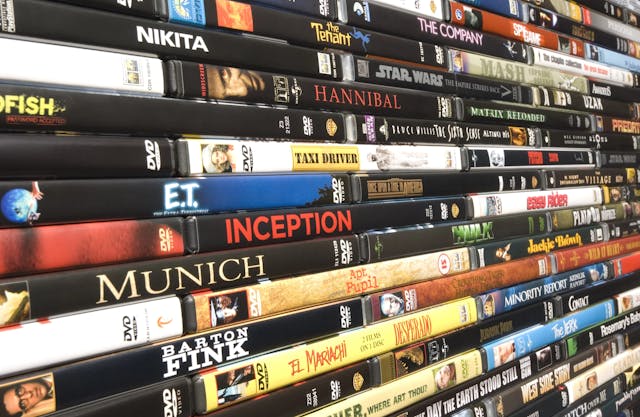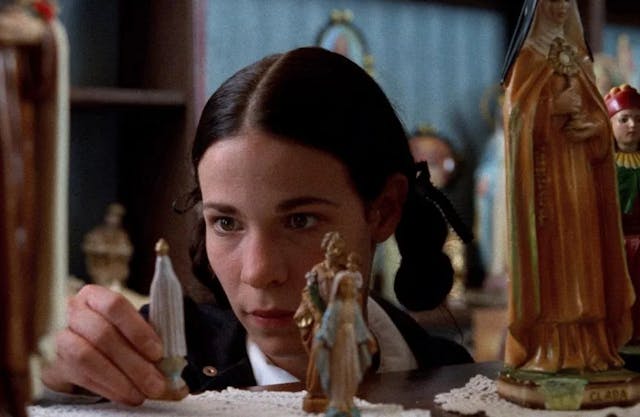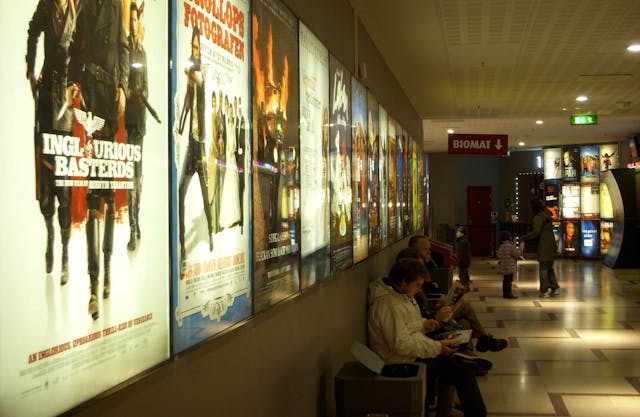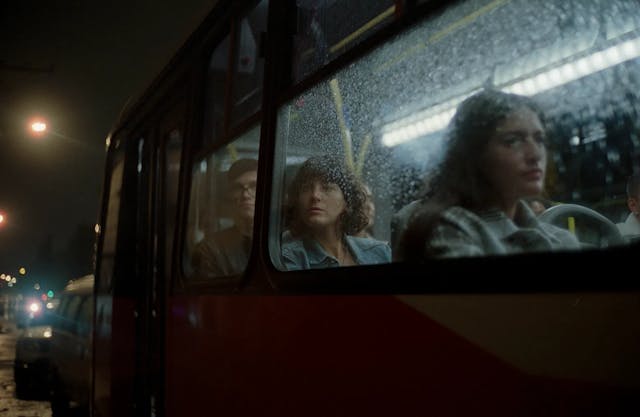
The availability of movies from the early days of cinema may lull you into a sense of safety. You saw all the Buster Keaton comedies you could find. You geeked out at “Metropolis,” and admit it, shed a tear or two with “Sunrise: A Song of Two Humans.” Surely, your brilliant indie film will be around long enough to wow movie buffs in the XXII Century and beyond. Right?
Well, most probably, no. You would be wrong. Movies are unexpectedly fragile, as proven by the case of Nancy Savoca’s “Household Saints.” The brilliant indie from the early 90s almost got lost forever. We went over how the filmmakers managed to grasp it from the jaws of oblivion. Alarmed over the phenomenon of missing movies, they created an organization to advocate for preservation and promote good practices so that your cinematic genius can be around to amaze future generations.
Where do we begin? According to the Preservation Guide for Filmmakers on their website, you should have started way before the cameras rolled. We’ll review their recommendations to set you on the right path.
Where is Your Movie, Anyway?
Let’s say you go through the film festival trek and are lucky enough to capture studio attention. Maybe they bought distribution rights for that horror DIY movie you financed with the change you found on your sofa. We like to think studios cherish their movies, and yes, in a way, they do, especially when they see them as an investment that can bring in more money along the way. This is the part where capitalism clashes with idealism. We like to believe that art should be preserved for art’s sake, but since it costs money, and studios are at heart business endeavors, profit is king. So, don’t assume that any studio or distributor will keep your movie forever out of their heart goodness.
Another wrinkle here is the rather volatile nature of the movie business. Studios can go broke, get put up for sale, and be absorbed into larger conglomerates. When they do, they go with all their assets: completed movies yet to be released, those already in the production pipeline, intellectual property whose rights were acquired for possible development, and their archival library. Sometimes, the new owner does not care too much about catalog titles.

The A24 of the Golden Age of Hollywood?: RKO Pictures library is still around but through assorted distributors. / Photo courtesy of Creative Commons.
Consider the case of RKO Pictures. The legendary studio and distribution company was founded in 1929 and flourished during Hollywood’s Golden Age. Like post-millennials whose pulse increases when they see the A24 logo and Gen X-ers sighting the word Miramax, once upon a time, the Morse code-bleeping tower that announced “An RKO Picture” was a beacon for quality. They gave us “King Kong” (1933), “Citizen Kane” (1941), “I Walked with a Zombie” (1943), and “Notorious” (1946), among other bangers. Flash forward to the present. There is a RKO Pictures founded in 1990. It manages part of the original catalog, but the control of some prime properties lies elsewhere. Disney owns “Notorious,” and “It’s a Wonderful Life” belongs to Paramount. Well, at least at the time I’m writing this. Who knows what will happen in the future?
The point is that the ups and downs of the business complicate the afterlife of movies. You can count on the studio or the distributor to save it for the delight of future generations. Back to the “Household Saints” study case, Savoca ended up saving some prints forgotten in a Warner vault. Alas, the rights did not belong to the studio anymore. She tracked them down to the state of a mid-west cable operator who, back in the 90s, invested in a few indie films. The story has a happy ending. The movie was restored, and it will be available in home video from Kino Lorber.

Almost lost generations: Judith Malina and Tracy Ullman shine in "Household Saints." / Photo courtesy of Kino Lorber.
Can’t I Keep My Movie Under the Bed?
You could, but it would not work in the long run. The elements and most devices used for preservation need particular conditions to withstand the passage of time and the environment. Plus, they can be bulky! Have you seen film cans? You could back up stuff to a hard drive - or several, but we’ll get there later - but that is just not enough. You want your movie to survive as close to its original quality as possible. Ideally, technicians should be capable of upgrading it to future video standards without compromising its original qualities and correcting any technical degradations. That is expensive and logistically complicated. So, it’s better to leave it to the experts.
Call the Lawyers!
What you can do is to make sure you are kept in the loop about the whereabouts of your movie, both physical elements and rights. Chances are it will take a few twists and turns during your lifetime. Again, nobody will do this out of the goodness of their hearts. So, before a single frame is filmed, or rather, before you sign along the dotted line, sit down with your lawyer and make sure the contract includes the following provisions for your benefit. These recommendations come from missingmovies.org
- Notification of names and contact information of entities holding rights to the film, including ownership of copyright and length of rights control.
- Notification of any transfer rights from the original owner.
These provisions will keep you updated on who has possession of physical assets and who controls the copyright at any given moment. It also comes in handy by letting you know if the copyright lapses and ends up for grabs so you can buy it and gain total control of your creation. Ideally, your contract will include clauses that ensure you receive copies of distribution agreements and delivery schedules, as well as to be included in the notices of the agreements.
Armed with this information, you will also know who to call at any given moment, saving you a lot of gumshoe effort.
- A list from the post-production supervisor or similar tech detailing all the physical materials and their destination.
This will allow us to confirm everything necessary to preserve your movie exists and who receives it for safekeeping.
- Demand a minimum of three preservation LTOs (Linear Tape Option) containing the items described in the Missing Movies Optimal File List.
The Optimal File List
Missing Movies offers an optimal file list that can put fear in the heart of the less tech-savvy - Hi! - but don’t worry. A producer or a tech in post-production can back up this information on at least three devices. Take a breath, and read on.
- 2K or 4K ungraded sequential picture frames. Frames should not be restored or cleaned up. Get them pure.
- 2K or 4K sequential picture frames and/or MOV of restored and/or graded, with final framing.
- 2K or 4K sequential picture frames and or MOV of restored and/or graded full aperture.
- 2K, 4K, or mezzanine MOV/MP4 files with specs.
- 2K or 4K DCP, unencrypted.
- 2K or 4K DCM, optional.
- Final sound mix.
- All audio mixes and mix stems.
- M&E mix.
- All textless backgrounds.
- Scans of approved key stills and posters.
- Project files for reference (Avid, Resolve, or FCP).
- If it's a documentary film, include the complete video interviews of all subjects.
It’s important to include several documents with valuable information, such as:
- A README document with all the relevant technical specifications for picture and sound.
- Dialogue and action continuity script.
- Full chain of title (COT) documents.
- Music cue sheet.
- Cue sheet for third-party licensed elements, like music, photos, and video clips. Include contact info of copyright owners.
- Abstract of distribution deals, including terms, territories covered, and copyright provisions.
- Production notes and press kit.
This may sound like overkill, but remember you are preparing your movie to survive any eventuality.
A Word about Hard Drives
Yes, we know hard drives are convenient, cheap, and easy to get. Alas, they are not eternal. Beyond five years, you are pretty much gambling with your work. It’s not a matter of “if they fail,” but “when.” So, think of them as an extra backup device that you can keep close for easy access. Experts recommend at least three copies, saved in different locations. Remember all those movies that perished in the Warner Bros. fire? If two extra copies had been stored elsewhere, we would not be lamenting their loss. Plus, you need to transfer the information to new hard drives every 4-5 years at the latest.

By any chance, do you have a "3 for the price of 1" deal?: Take your pick of hard drives for a cheap backup of your movie. / Photo by Colleen Michaels, courtesy of Dreamstime.
In contrast, LTOs (Linear Tape-Open) are much more sturdy and durable. Manufacturers promise a lifetime of 30 years, which gives enough time to migrate the data to future formats. With up to 18 terabytes of capacity, they have more than enough space to record everything you throw at them. And remember, three is the magic number. Make sure three LTOs exist, housed in different locations.
The cloud is nice, but you don’t know how expensive it will get as time goes by. Think of it as a hard drive: an extra precaution that is nice to have.
Parting Words
These precautions will allow your movie to survive whatever technological leap comes along. For more information, please visit missingmovies.org. And remember, this article does not constitute legal advice. Get an attorney to help you in the process. If you are an indie filmmaker without a studio or a distributor, you are responsible for handling this.
It is in your best interest to do the work. We hope your great-great-great grandchildren enjoy your opus. Remember to put in your will that they have to keep backing that stuff up!

Don't gamble with your movie!: Vincent D'Onofrio, Victor Argo, Michael Rispoli, and Joe Grifasi play the night away in "Household Saints." / Photo courtesy of Kino Lorber.
Watch “Lonely”
“Lonely” is a powerful reminder that no one is ever truly alone, and there is always someone out there who cares and wants to help.
Stream NowWant to get an email when we publish new content?
Subscribe today




























